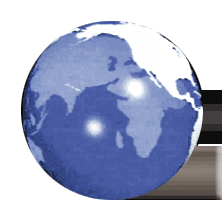 |
 |
WHERE ARCHAEOLOGY AND ETHNOGRAPHY MEET |
Page 3/3 |
Archaeology has always been involved in ethnographical discourse. In the case of rock art
studies it was often limited in seeking ethnographic analogies, which could substantiate
various hypotheses put forward by archaeologists. Within last decades one can observe a
new shift in rock art research towards the understanding of ethnographic contexts. Of
course, ethnographic sources create useful interpretative contexts for rock art from the
so-called ‘ethnographic present’, but until recently there was no suggestion of a
contemporary tradition in the rock art of Uzbekistan. The situation changed when we
started to look more carefully at the ethnographic data available from this region. In a collection of photographs made by Leon Barszczewski at the end of XIX century we found one photo representing a group of Tajiks in front of a house on which white geometric
motifs were visibly painted. This discovery was especially important when a similar motif
was discovered on the wall of a rock shelter in the Zaraut-Kamar Gorge (near Sherabad), in
the mountains of southern Uzbekistan. Analysis of the Zaraut-Kamar images indicated that
there was a cultural connection with the Tajik custom of house painting and the New Year
feast celebrated with the advent of spring (at the end of March). The ritual feast is
commonly known as Nouruz, and it has links with older Iranian (Persian) traditions.
The rock paintings in Zaraut-Kamar can be divided into different chronological phases. The
oldest are supposed to come from Mesolithic (ca. seventh mill. BC) and are an exceptional
find of this period within Central Asia. The age of the more recent paintings is not clear.
Some scholars believe that they were created in the Iron Age or during Medieval times. The
new analysis of the Nouruz rite has led us to rethink the question of the age and ethnic
context of rock paintings in Uzbekistan. They are only known at a few sites – Zaraut-
Kamar, Sangi-Dzhiumon, and Aksakal-Atasay – and were believed to be several thousand
years old, but now it is very probable their age is rather only a few hundred years old. The
context of the paintings from these sites may have been connected with the celebration of
the New Year Nouruz rite. The fact that they were discovered in areas still populated by
Iranian speaking Tajiks strengthens this hypothesis. This is reinforced by the fact that the
images are well preserved for the red paint is still clearly distinguishable. The paintings
were not found in cave environments, which can preserve them from Central Asian
climatic conditions for thousands of years, and strongly suggests a more recent origin.
 |
THE FUTURE OF ROCK ART IN UZBEKISTAN |
Uzbekistan is most famous for its
splendid medieval architecture. In recent
years a lot of effort has been taken to
enliven this historic heritage. On the
other hand, rock art is not as spectacular
as Registan or the Shah-i-Zinda complex
and the sites are less accessible. In order
to see the mysterious painted or
engraved images on rocks one must
travel hundreds kilometres through sands
of desert or treacherous mountainous
paths. Not many people are able to
reach these remote places, but it is the
duty of all to be aware of this heritage
and to know that these often enigmatic
images have been endowed with specific
power serving as a kind of
communication system. However, in
locations more easily accessible we often
find examples of the destruction of images, like at Sarmish-say Valley in Nuratau
Mountains, which is one of the richest rock art sites in Uzbekistan. The tradition of rock art
in Uzbekistan spans from the prehistoric to contemporary times and we should be
concerned with the process of creating a social awareness of their great significance -
indispensable if we want to preserve the long artistic tradition of countless peoples who
inhabited the land of Uzbekistan since prehistory.
 |
FURTHER READING |
• Formozov, A.A. 1965. The rock paintings of Zaraut-Kamar, Uzbekistan.
Rivista di Scienze
Preistroiche 20: 63-84.
• Francfort, H-P. 1998. Central Asian petroglyphs: between Indo-Iranian and shamanistic
interpretations, in: C. Chippindale, P.S.C. Taçon (eds),
The archaeology of rock-art, 302-318.
Cambridge: Cambridge University Press.
• Kośko, A., T. Širinov, W. Rączkowski (eds) 1997.
Sztuka naskalna Uzbekistanu (Rock art of
Uzbekistan). Poznań: Instytut Historii UAM.
• Jasiewicz, Z., A. Rozwadowski 2001. Rock paintings – wall paintings: new light on art tradition in
Central Asia.
Rock Art Research 18 (1): 3-14.
• Lymer K. 2006. The light fantastick: rock art, visions and the myth of solarism in Central Asia.
Cosmos:
The Journal of the Traditional Cosmology Society 22: 47-63.
• Lymer K. 2008. An introduction to the rock art of Kazakhstan.
The DSCA Journal (electronic
publication for the Danish Society for Central Asia): 46-55.
• Rozwadowski, A. 2001. From semiotics to phenomenology: Central Asian petroglyphs and the Indo-
Iranian mythology, in: K. Helskog (ed.),
Theoretical perspectives in rock art research, 155-174,
Oslo: Novus Press.
• Rozwadowski, A. 2001. Sun gods or shamans? Interpreting solar-headed petroglyphs in Central Asia,
in: N. Price (ed.),
Archaeology of shamanism, 65-86. London, New York: Routledge.
• Rozwadowski, A. 2003.
Indoirańczycy – sztuka i mitologia. Petroglify Azji Środkowej. Poznań:
Wydawnictwo Naukowe UAM.
• Rozwadowski, A. 2004.
Symbols through time: interpreting the rock art of Central Asia. Poznań:
Institute of Eastern Studies, University of Adam Mickiewicz.
• Rozwadowski, A., M.M. Kośko (eds) 2002.
Spirits and stones: shamanism and rock art in Central Asia
and Siberia. Poznań: Instytut Wschodni UAM.
• Tashbaeva, K., M. Khujanazarov, V. Ranov, Z. Samashev 2001.
Petroglyphs of Central Asia. Bishkek:
International Institute for Central Asian Studies in Samarkand.
→
Bradshaw Foundation











